Affiliate links on Android Authority may earn us a commission. Learn more.
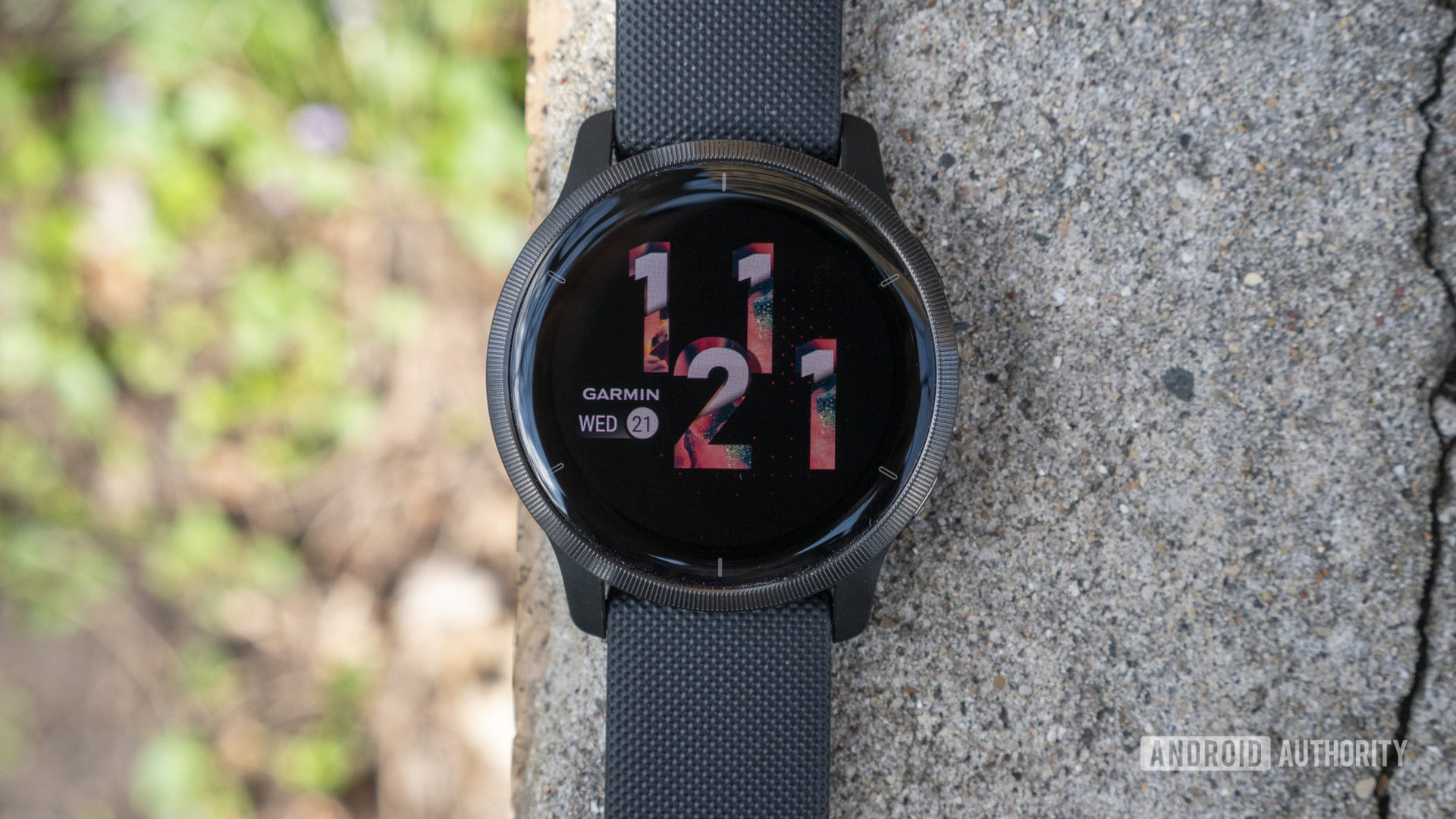

Garmin Venu 2 review: A worthy sequel
Published onFebruary 2, 2022

Garmin Venu 2
MSRP:
What we like
What we don't like

Garmin Venu 2
The Garmin Venu marked an important milestone for Garmin wearables: it was the company’s first smartwatch that truly appealed to the masses. It took the tried-and-true formula of the vivoactive line and added an AMOLED display — a first for Garmin — which was meant to catch the eye of those looking for alternatives to their Apple or Galaxy Watches.
The Garmin Venu 2 is all about refinement. It addresses some of the concerns we had with the first-gen model while also making much better use of that crisp display. Learn more in our full Garmin Venu 2 review.
What you need to know about the Garmin Venu 2
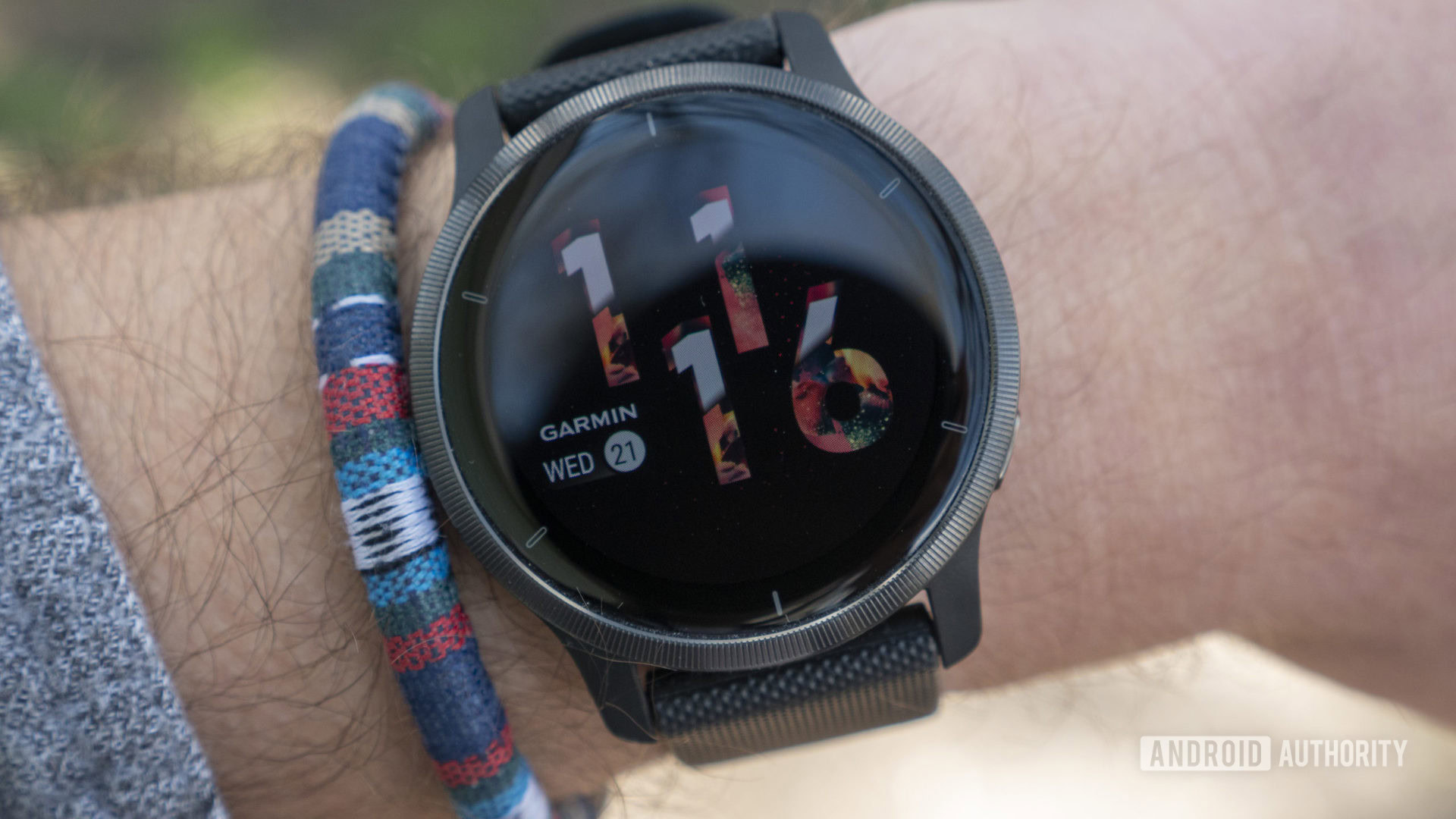
- Garmin Venu 2 and Venu 2S: $399.99
The Garmin Venu 2 is Garmin’s most approachable smartwatch yet. It takes what made the original a success and adds even more fitness- and health-tracking tools.
There are now two Venu models: the 45mm Venu 2 and 40mm Venu 2S. Functionally, they’re the same devices. Both come with all the new features, including a sleep score based on your tracked sleep data, additional sport profiles including hiking and indoor climbing, and a new Health Snapshot feature that records vital health data all at once, which you can then share with your healthcare provider. The Venu 2 promises vastly improved battery life, too, along with more room to store your music.
Related: The best Garmin watches
Be ready to pay for all of those features, though. The Garmin Venu 2 costs $399.99, just as the original did at launch. It’s available now on Garmin.com, with other retailers selling the device at a later date. You can pick up the Venu 2 in Silver/Granite Blue or Slate/Black, while the Venu 2S comes in Slate/Graphite, Light Gold/Light Sand, Silver/Mist Grey, or Rose Gold/White colorways.
I probably don’t need to tell you that competition in the mid-range fitness watch space is tough. Most iOS users gravitate towards the Apple Watch, and Android users have Wear OS, Fitbit, the Galaxy Watch, and more to choose from. With the Venu 2, Garmin needs to differentiate itself from the rest.
Design: Now there are two of them
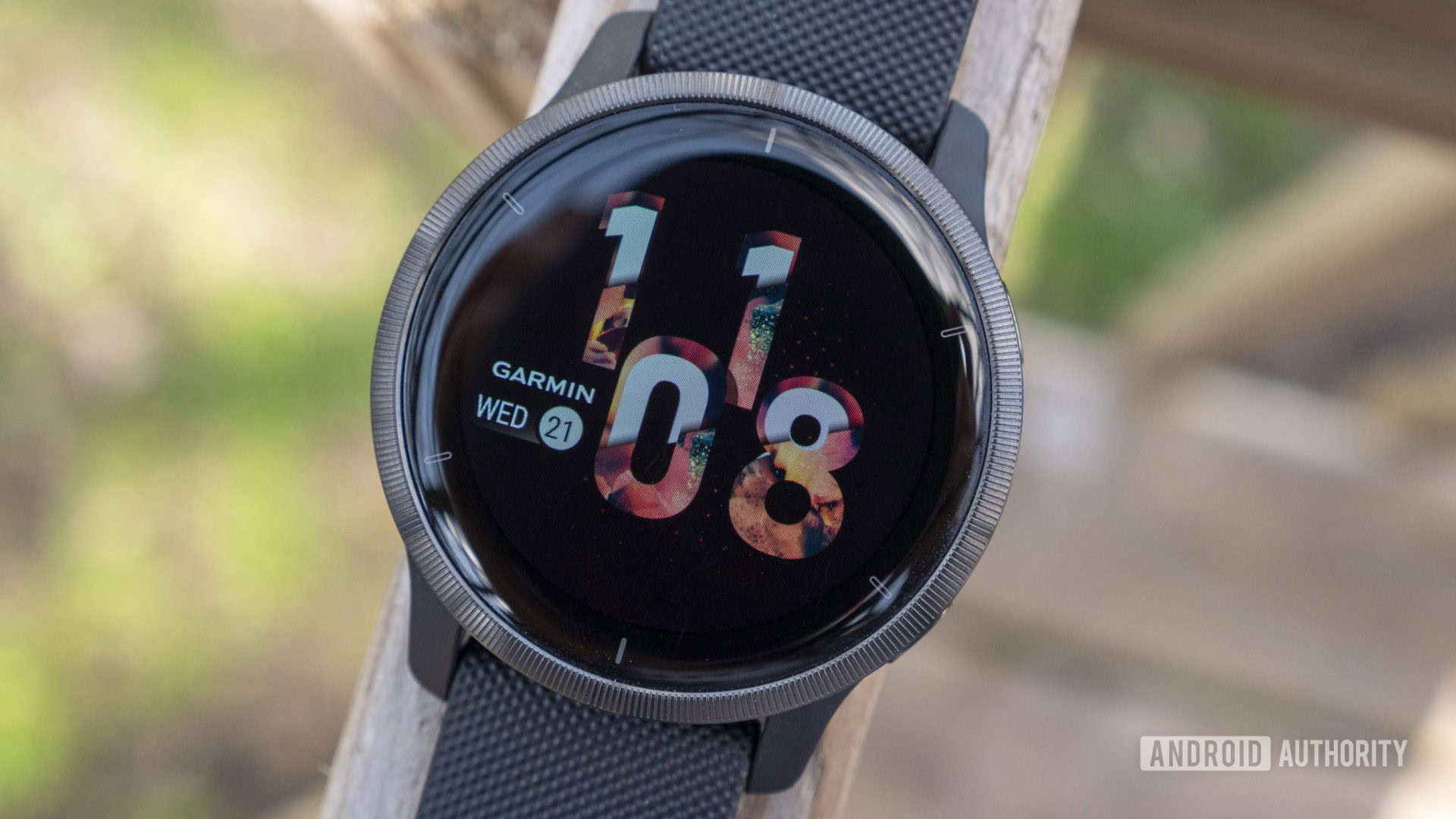
The Garmin Venu 2’s design is nearly unchanged from the original, save for one major point: it now comes in two sizes. Garmin split the difference of the original 43mm Venu and now offers a 45mm Venu 2 and a 40mm Venu 2S. Aside from physical size and battery capacities, the Venu 2 and 2S are essentially the same thing.
I have average-sized wrists, and the Venu 2 fits me well. It’s on the bigger side (I thought the Venu was a perfect size), but its lightweight build makes up for that. If you have smaller wrists, you should opt for the Venu 2S.
The Venu 2’s case is made from high-quality plastic, and the grooved bezel is stainless steel. It feels about as high-end as you’d want a fitness watch to feel. I get weird about exercising with an expensive Apple Watch, which almost feels too nice to workout with. And try not to fret about the plastic build — it keeps the Venu 2 durable and light.
Our Garmin Venu 2 review unit has a 1.3-inch AMOLED display with a resolution of 416 x 416. It’s a pixel-dense display with vibrant colors and good viewing angles. It gets plenty bright, so outdoor visibility isn’t an issue. There are still sizable bezels surrounding the display, but I’ve never heard of anyone complaining about that on a fitness watch.
The Venu line notably omits Garmin’s classic transflective MIP panels that appear on the vivoactive, Fenix, and Forerunner lines. A brighter, prettier display means battery life takes a hit. However, Garmin more than doubled the battery life of the Venu 2 to make up for that difference.
Also read: Garmin Venu 2 and Venu 2S buyer’s guide
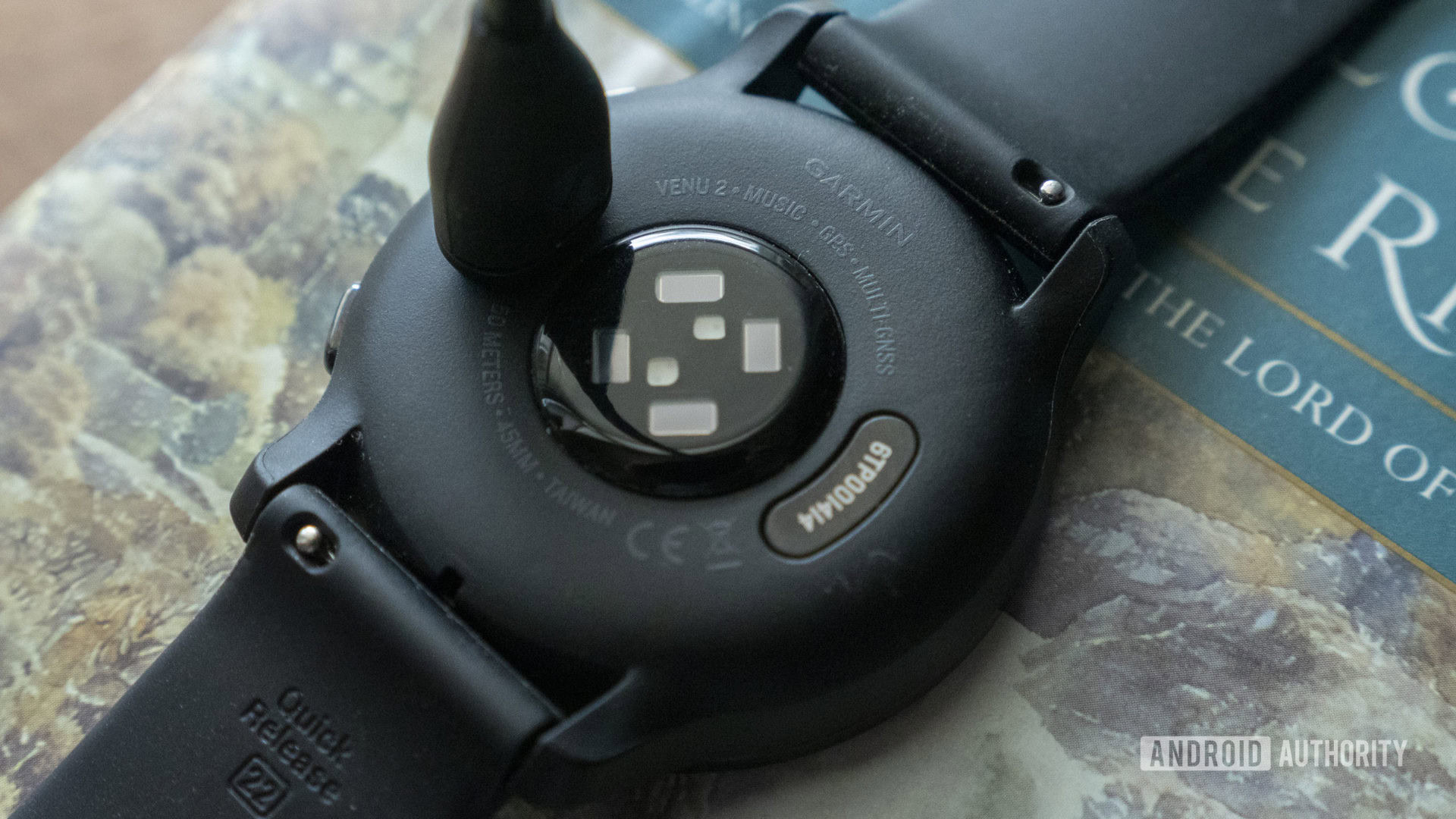
Garmin quotes the Venu 2’s battery to last up to 11 days in smartwatch mode or up to eight hours with GPS + music. I’m sure it’s possible to get 11 days out of the battery, but only if you really take care not to turn on too many features. I’ve had the always-on display turned on, raise-to-wake turned off, SpO2 monitoring on during sleep, and a few runs thrown in each week, and I’ve been getting about 4.5 days of use. That’s a far cry from 11 days, but I’ve admittedly been running the device pretty hard. Your mileage will most certainly vary.
Battery life can be finicky if you want to use all the sensors.
Luckily, there are two stop-gaps for the short battery life: quick charging and a new battery saver mode. The Venu 2 now charges up much quicker than previous models. ~10 minutes of charging adds a full day of use in smartwatch mode or one hour with GPS + music. Battery saver mode can help you eke out as much life as possible. Enabling the mode sets a low-power watch face, the display timeout to short, the brightness to low, and disables Wi-Fi, music playback, automatic activity start, blood oxygen monitoring, and wake gestures.
Health and fitness tracking: Lots of under-the-hood updates
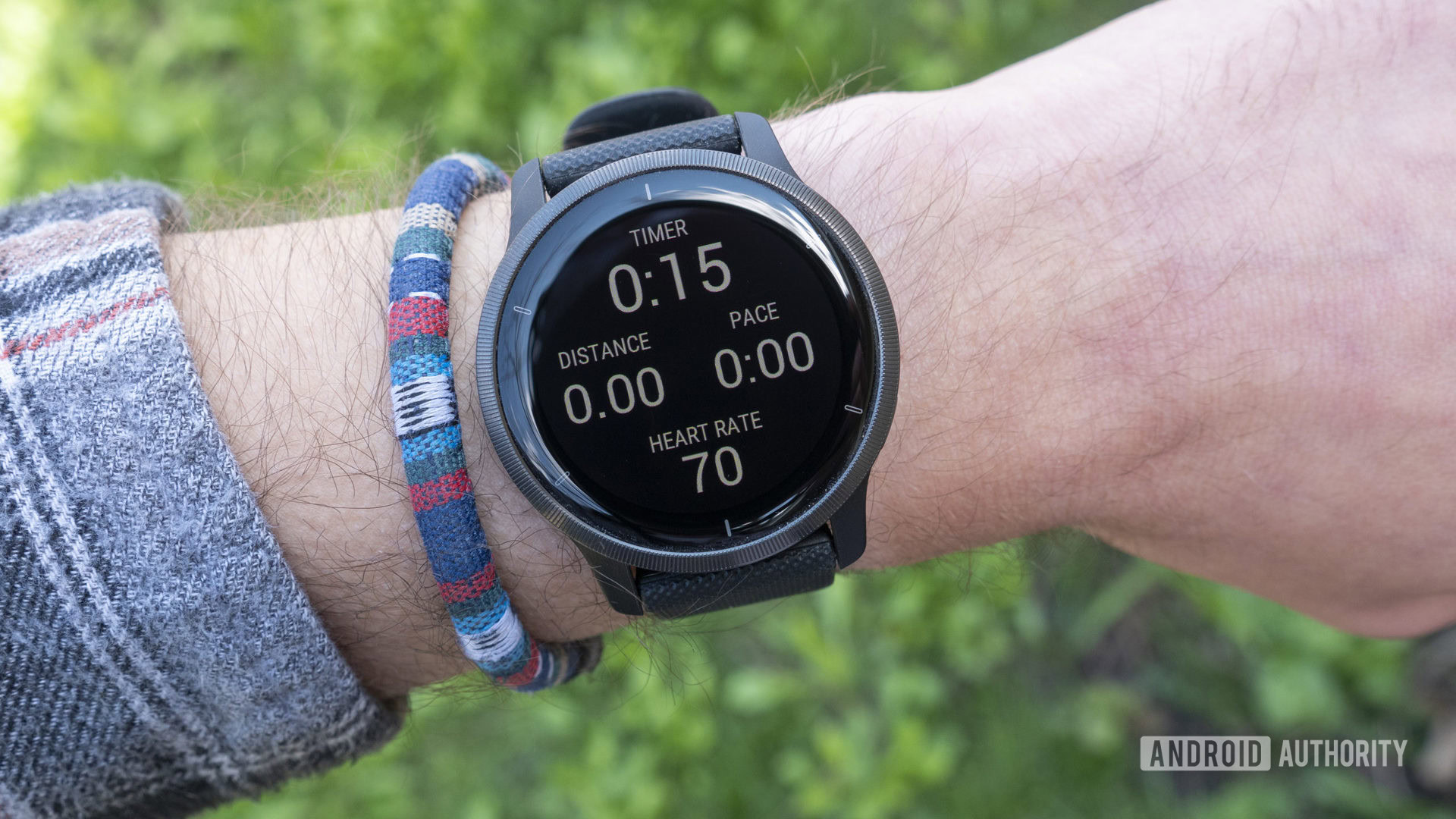
The Garmin Venu 2 is a full-fledged multisport watch. The Venu 2 will track your steps, calories, floors, heart rate, stress, blood oxygen levels, respiration rate, and more throughout the day. As is usually the case, step tracking and calories burned metrics have been spot on with what my other wearables have reported over the last few weeks.
It can track over 25 sport profiles, including new additions like HIIT, indoor climbing, hiking, and even bouldering. I’ve heard a lot of first-gen Venu users ask for HIIT and hiking profiles especially, so these should be welcome additions for many people.
On-device animated workouts are back, too. Over 75 workouts are available in all, including exercises for Pilates, yoga, cardio, HIIT, and more. I really like the animated workouts. It’s not always easy to follow along with a workout on your wrist while you’re trying to move your body, but they come in handy in a pinch.
You have a few options for HIIT workouts. There’s an all-encompassing Free mode if you’d like to keep tabs on your overall data. There are also four timed workouts: AMRAP, EMOM, Tabata, and custom. The first three are pretty self-explanatory for HIIT veterans. Custom allows you to set a time limit for your active and rest times, as well as how many moves and rounds you’d like to accomplish. Also, there are three pre-loaded HIIT workouts if you’d rather follow along on your watch.
HIIT exercises work well. The on-device timers are clear and easy to read. You’ll feel a buzz when each interval begins and also every second for the last five seconds before the next interval.
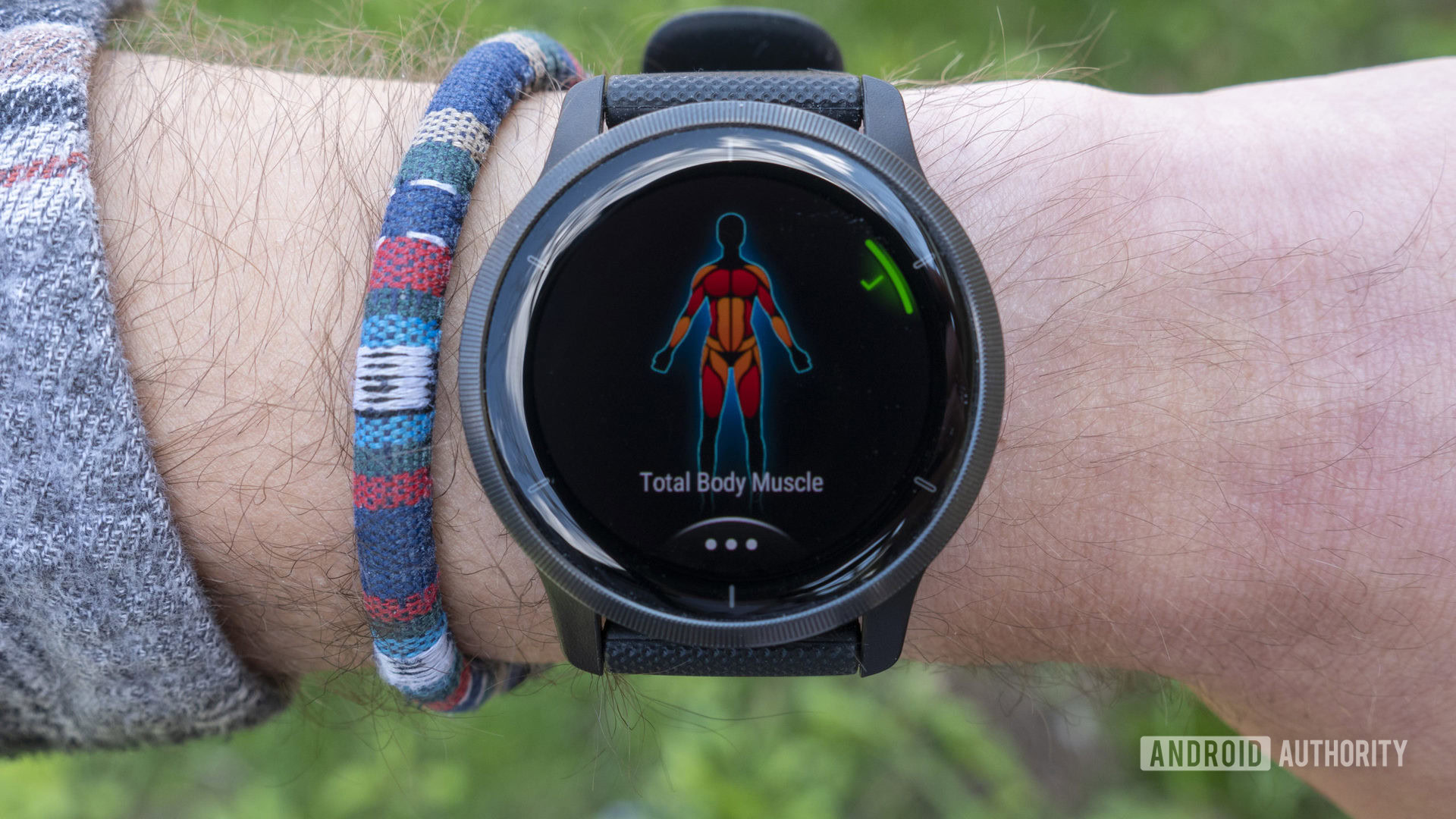
Garmin has also updated its strength training profile to include information like your PRs right on the device. Since PRs are a big part of strength training, this is an obvious feature that will benefit many users. Also, when you select a pre-loaded strength workout on the Venu 2, it’ll now show a detailed graphic showing the muscle groups you’re targeting. As a strength training novice, this feature is especially useful for me.
Body Battery remains one of my favorite Garmin features. On the Venu 2, it's better than ever before.
Those aren’t the only under-the-hood changes with the Venu 2. Garmin has updated its Body Battery algorithm based on feedback from existing Garmin users. Now, Garmin claims it’s more difficult to achieve a Body Battery score of 100. The improved algorithm will now take more sleep tracking data into account. Maybe I’ve just been on top of my game, but I’ve woken up with a 100/100 Body Battery score numerous times throughout the testing period. That’s not to say the data is incorrect; Body Battery on the Venu 2 is usually reflective of how I feel each day, and I’ve felt well-rested each time I hit 100.
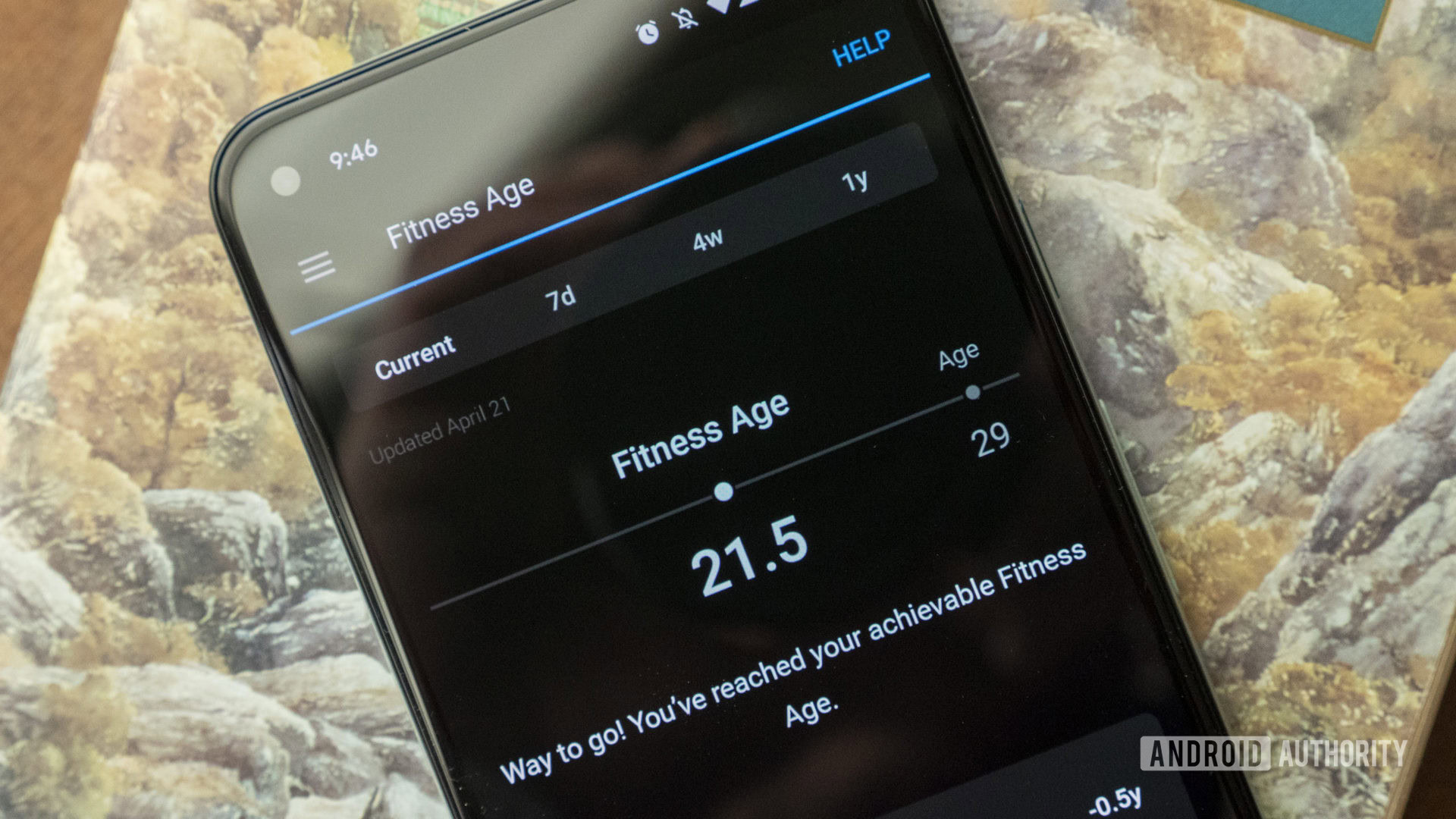
Garmin devices have been able to estimate your “fitness age” for some time, but the Venu 2 gets another improvement to make the data more accurate and comprehensive. Newer Garmin devices like the original Venu only estimated your fitness age (how fit you are compared to your actual age) based on your VO2 max data. The Venu 2 is more detailed with its data, as it estimates your fitness age based on your weekly vigorous activity, resting heart rate, and BMI or body fat percentage. This new and improved fitness age method is not coming to the original Venu.
Garmin Connect will still display tips on how to reach your target fitness age. Mine is currently sitting at 21.5 (I’m 29), so the app only tells me, “Way to go! You’ve reached your achievable fitness age.”
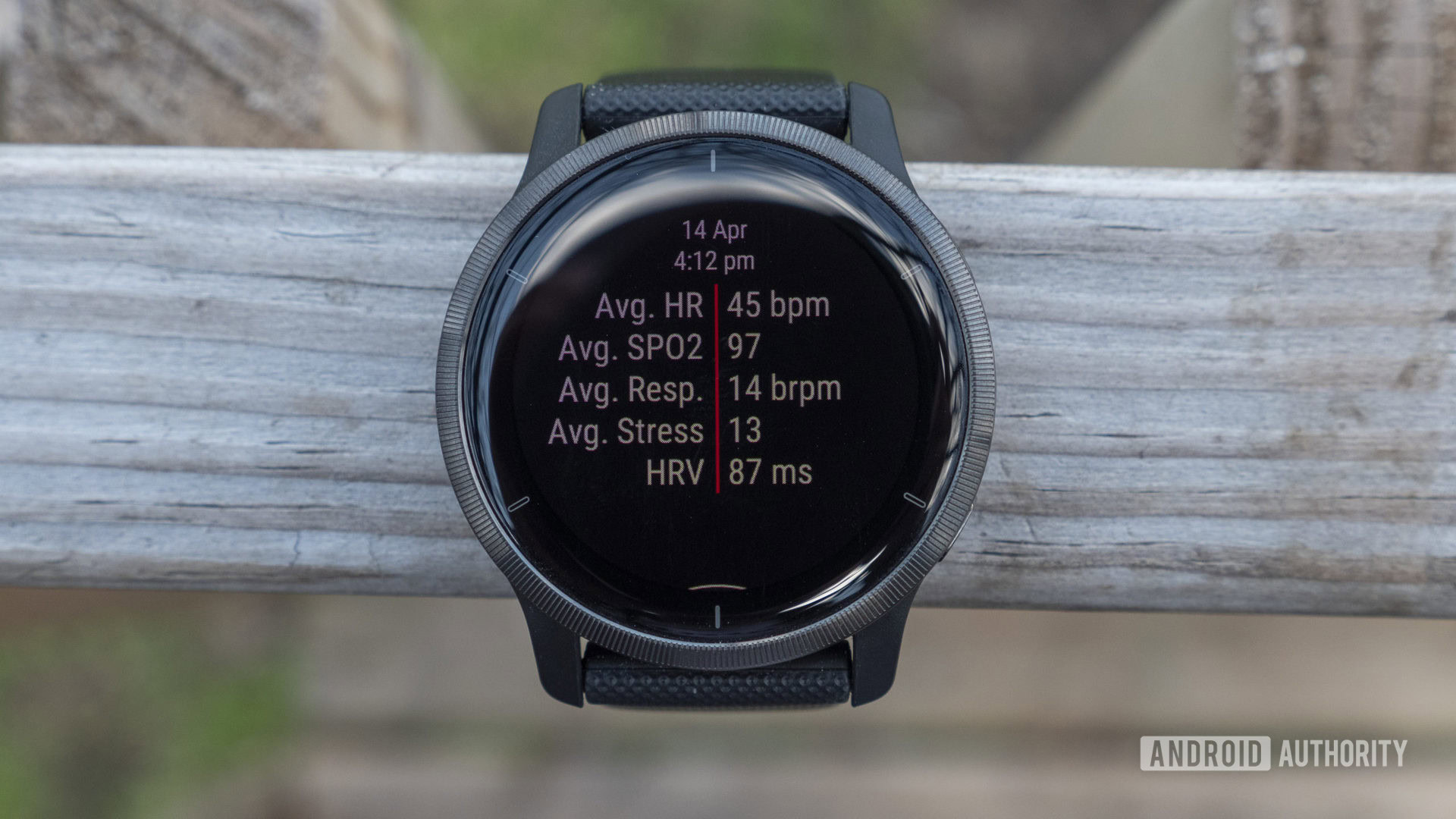
My favorite new feature on the Garmin Venu 2 is called Health Snapshot. Once you select the app, the Venu 2 will take a two-minute recording of your essential health stats like heart rate, heart rate variability, blood oxygen levels, respiration rate, and stress. After that’s done, you can view your results in Garmin Connect and generate a PDF of your stats to share with your healthcare provider. Unfortunately, the PDF feature wasn’t available on our review unit but will be ready on April 29. Also, Garmin wouldn’t comment on whether or not Health Snapshot will come to older Garmin devices.
Speaking of essential health stats, the Garmin Venu 2 can keep track of your blood oxygen saturation all day, at night, or both. Since the Venu 2 is equipped with the new fourth-generation Garmin Elevate heart rate sensor, accuracy should be improved over the original Venu and vivoactive 4. I checked my SpO2 readings against a reliable fingertip pulse oximeter at various points throughout the testing period, and the Venu 2 has lined up nearly every time.
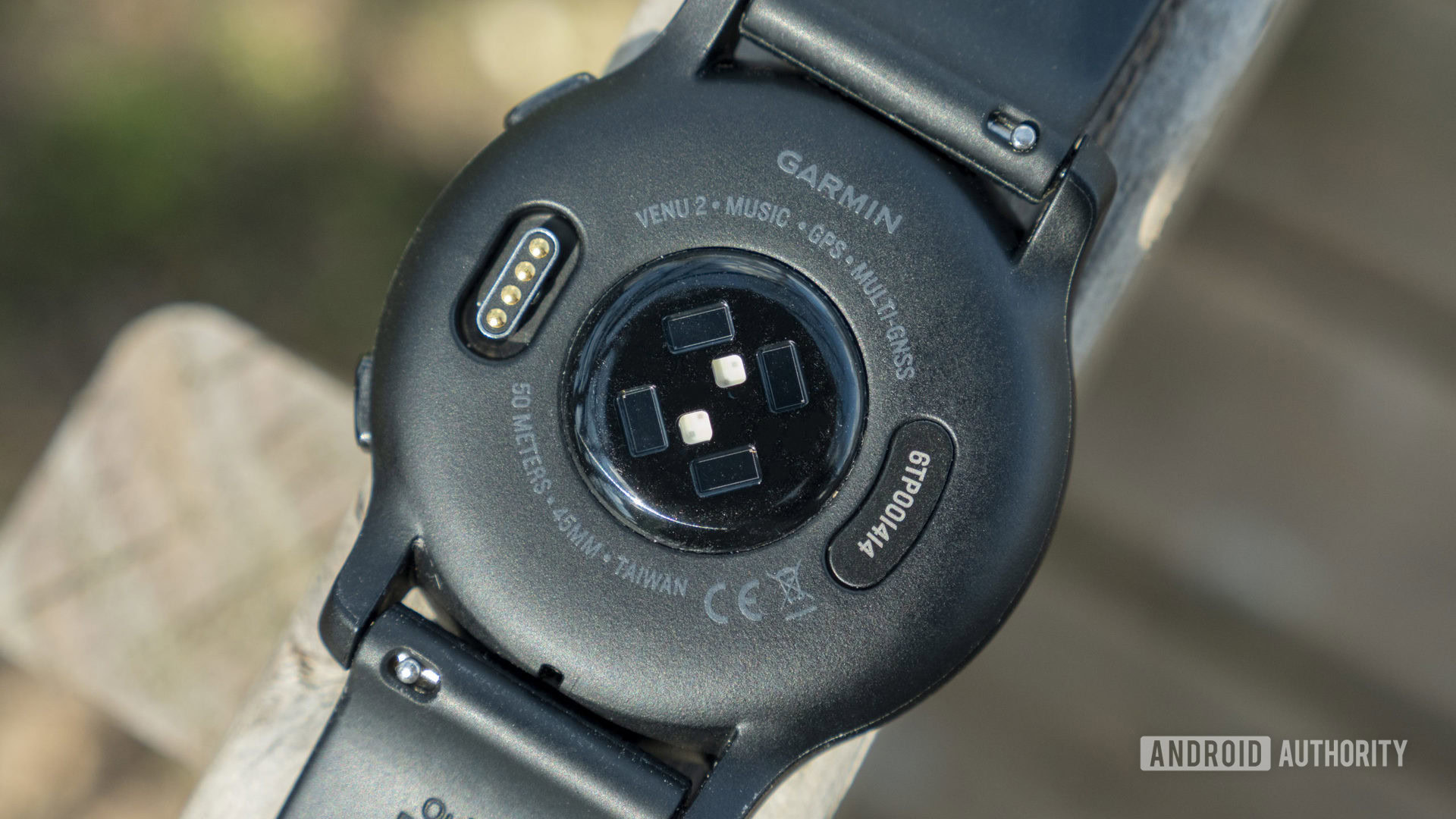
Let’s talk about heart rate accuracy. In addition to improving SpO2 data, Garmin says the goal with the Gen. 4 Elevate sensor is to improve heart rate accuracy for the wide variety of activities that its devices offer. I’m assuming this means we won’t see huge improvements in resting heart rate data — not that it needed a ton of improvements, of course. Regardless, resting heart rate readings have lined up well with my Apple Watch Series 6 and Wahoo Tickr X chest strap. The Venu 2 has also been reliable in telling me when my resting heart rate is a bit too low.
Heart rate readings during workouts appear to be a mixed bag. My first run with the Garmin Venu 2 and Wahoo Tickr X was a total fail on Garmin’s part. The watch’s readings were all over the place and only managed to keep up with major trends in the data. I received a software update after that, which seemed to have moved things in the right direction.

But that didn’t completely fix things. I took a ~four-mile run with the Venu 2 (purple) and Apple Watch Series 6 (gold), which you can see above. Both watches lined up well once things got going past the 18-minute mark. Before that, it was a trainwreck, and I need to side with the Apple Watch for those stats. I also ran this with the Wahoo Tickr X, and the data lined up with the Apple Watch in the first 18 minutes. However, the chest strap glitched out after that, hence why I did not include it on the graph above.
We can see some patterns here. Every time the Apple Watch dipped down under 100bpm, the Venu 2 choked at around 120bpm. I was walking during those dips, so my heart rate surely wasn’t at 120bpm. This tells me there’s potential, but Garmin has some tweaking to do to its algorithm before things settle in.
This type of thing is expected with brand-new heart rate sensors. Luckily, heart rate sensors can be updated via software updates, so we’ll keep an eye on this going forward to see if Garmin can improve things.
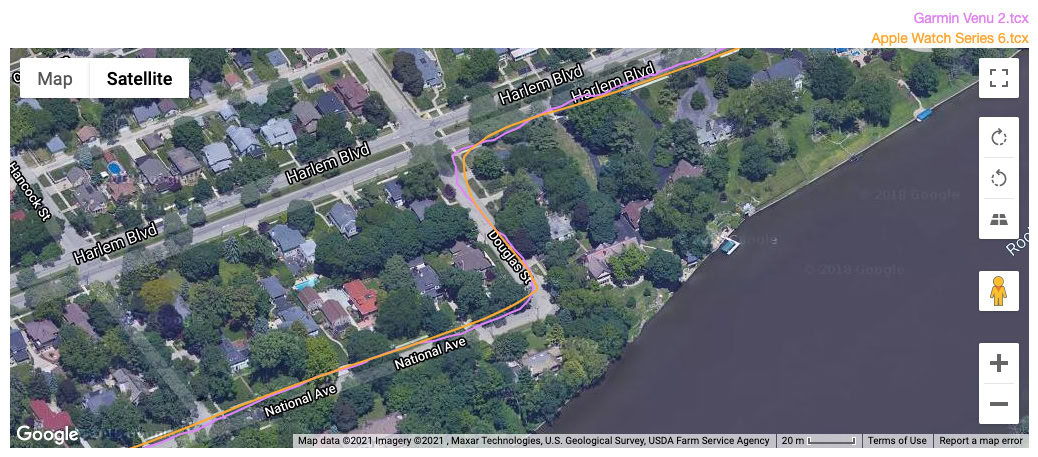
I’ve found great success with the Venu 2’s GPS tracking. Above, you’ll see the same ~four-mile run with the Venu 2 (purple) and Apple Watch (gold). It was a cloudy day without much sunshine, and I made it a point to run through areas with plenty of trees. The Venu 2’s GPS data came back with only a few glitches. The overall data appeared to be in line — or dare I say, a step above — the Apple Watch’s GPS data. Color me impressed.
Also read: The best running watches you can buy
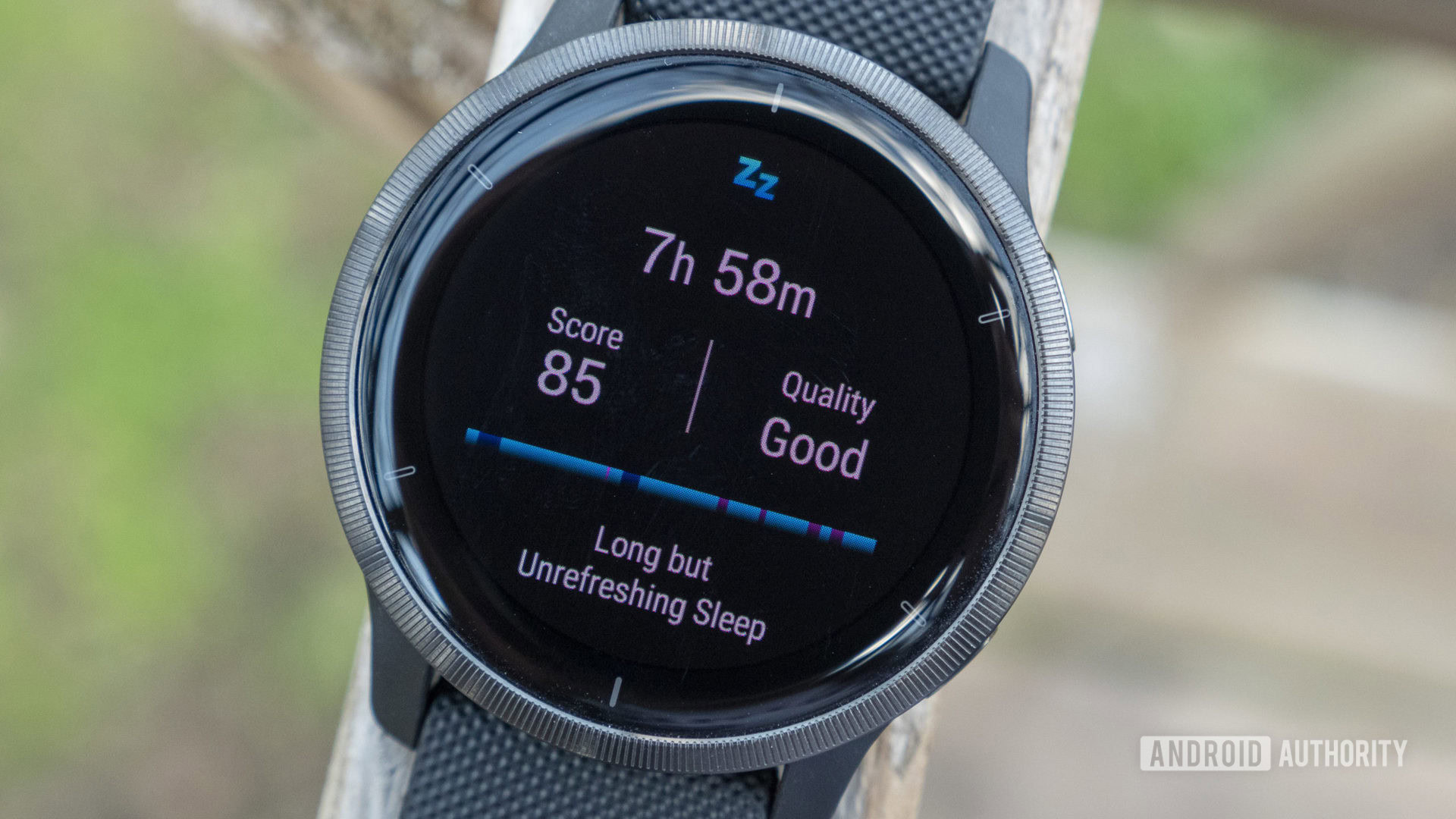
Sleep tracking has always been one of Garmin’s strong suits. It’s made even better on the Venu 2 now that it can give you a sleep score alongside your sleep analysis. Most other sleep-tracking wearables offer sleep scores, so it’s good to see Garmin join the party.
The Venu 2 measures your sleep duration, stages (light, deep, and REM), and total time awake. I’ve compared the Venu 2’s sleep data with my Fitbit Sense and Oura Ring 2 over the past few weeks, and most of Garmin’s data appears to line up with the others.
On more than one occasion, the Fitbit Sense was able to pick up on short post-wakeup naps when the Venu 2 did not, but I doubt that will be a serious issue for many users. I have noticed the Venu 2 is also worse at tracking inconsistent sleep schedules. One night, I fell asleep on the couch, then grabbed a glass of water and brushed my teeth before going up to bed. The Venu 2 only tracked my time in bed, though, so it appeared like I only got about four hours of sleep that night.
Blood oxygen levels, respiration rates, and overnight movements are also recorded at night, which you can compare against your sleep stage analysis to see if anything is affecting your quality. Respiration rates have lined up well compared with the Fitbit Sense and Google Nest Hub (2nd gen).
I’ve found Garmin’s sleep score to be a little generous on some nights. Other nights, it’s spot-on. The sleep score card in Garmin Connect shows your score at the top, analysis and suggestions below that, and a breakdown of how each sleep metric adds up to your overall score. I’ve received some legitimately useful information from Garmin Connect, which I can’t say for many other fitness products I’ve used. One constructive comment told me I exercised too late in the day, so my creativity and problem-solving may be challenging on the following day. That’s exactly how I felt the next day. Kudos, Garmin.
If I had one complaint, Garmin’s sleep score card is separate from the original sleep score card in Garmin Connect. Thus, I’ve found myself digging around for the stats at times, but I can’t say that’s the first time I’ve had to do that in Garmin’s app.
And finally, here are a handful of other Garmin Venu 2 features that have returned and essentially gone unchanged from the original Venu:
- Incident detection and assistance: Like most recent Garmin watches, the Venu 2 can notify your emergency contacts if something happens to you during your workout. The watch can send your name and location to your emergency contacts if it senses an incident. You can also trigger the feature manually if you feel like you’re in trouble and need to contact someone.
- Women’s health features: I could not test Garmin’s menstrual cycle tracking or pregnancy tracking features. There aren’t any new updates to report on the Venu 2.
- Hydration tracking: You can track your hydration levels on the watch and in Garmin Connect. I must say I don’t regularly use this feature because I know I drink enough water throughout the day, but it comes in handy for those who need to improve their water consumption.
- VO2 max: I’ve always had consistent VO2 max numbers on Garmin devices, and the Venu 2 is no different.
- All-day stress tracking: Stress tracking is another high point for the Venu 2. Your stress throughout the day is reflected on the watch and in Garmin Connect. The app provides short and sweet summaries of each day’s stress levels to help you more wisely plan out your day. For the first time ever, I received a “high stress level” alert when I was in line to get my COVID-19 vaccine at Walgreens.
Smartwatch features: Moving in the right direction
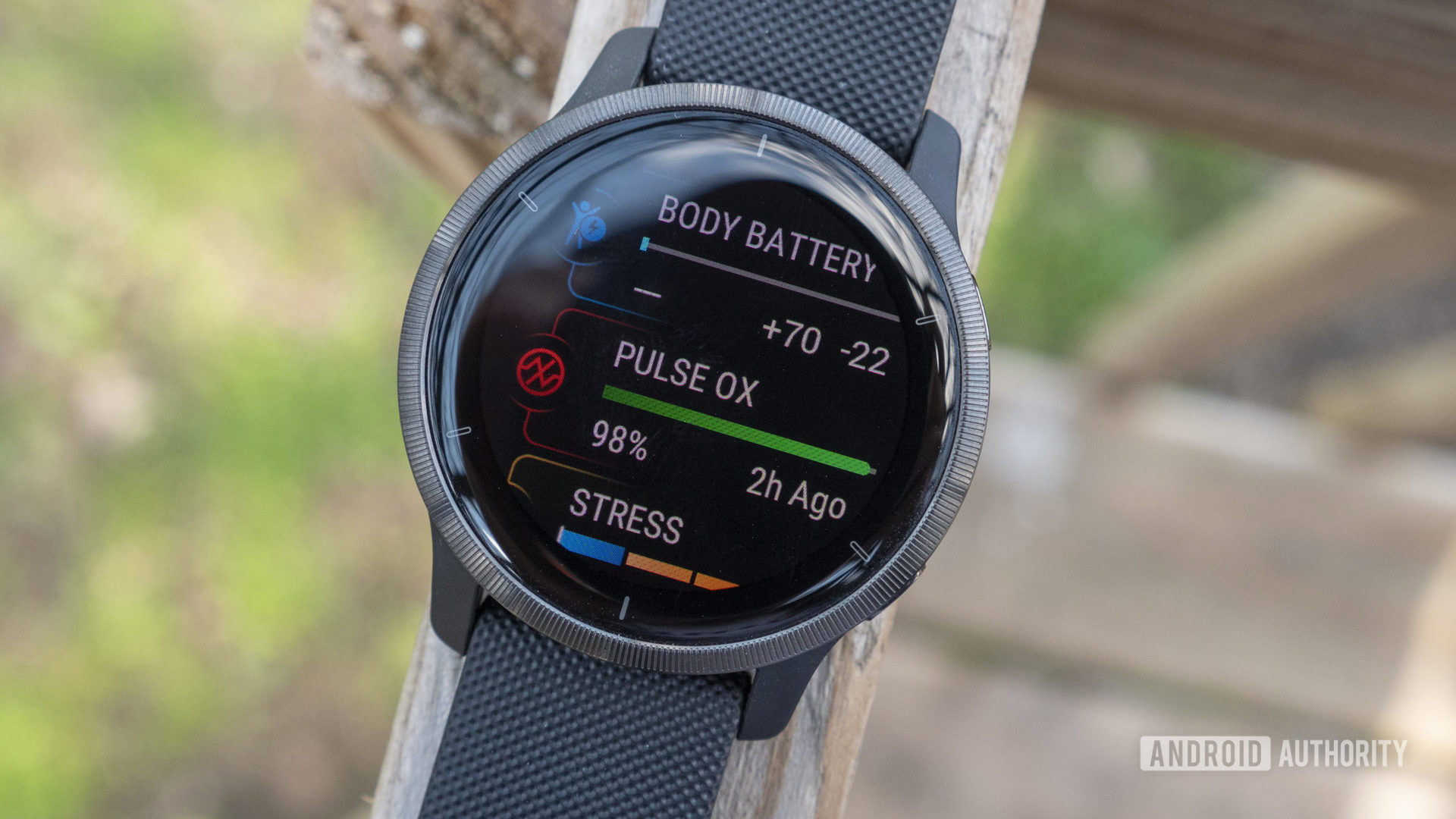
Our main complaint with the original Venu was that Garmin didn’t do enough to utilize that beautiful OLED screen. That has been completely fixed with the Venu 2.
The smartwatch has an all-new interface, complete with fun animations on the boot screen and new animated watch faces. The list of widget glances is now much more colorful. Each one has a neon outline to help stand out on the dark background. Just about every function of the watch now has a splash of color. It’s refreshing.
Related: The best smartwatches you can buy
I need to note that my Garmin Venu 2 review unit was running pre-release software, so animations were janky at times. Garmin assures me this will be fixed by the time devices ship to early buyers. The watch’s overall performance was fine. Using the Venu 2 isn’t nearly as smooth as using something like an Apple Watch. Performance is in line with what you’d experience on a Fitbit smartwatch.
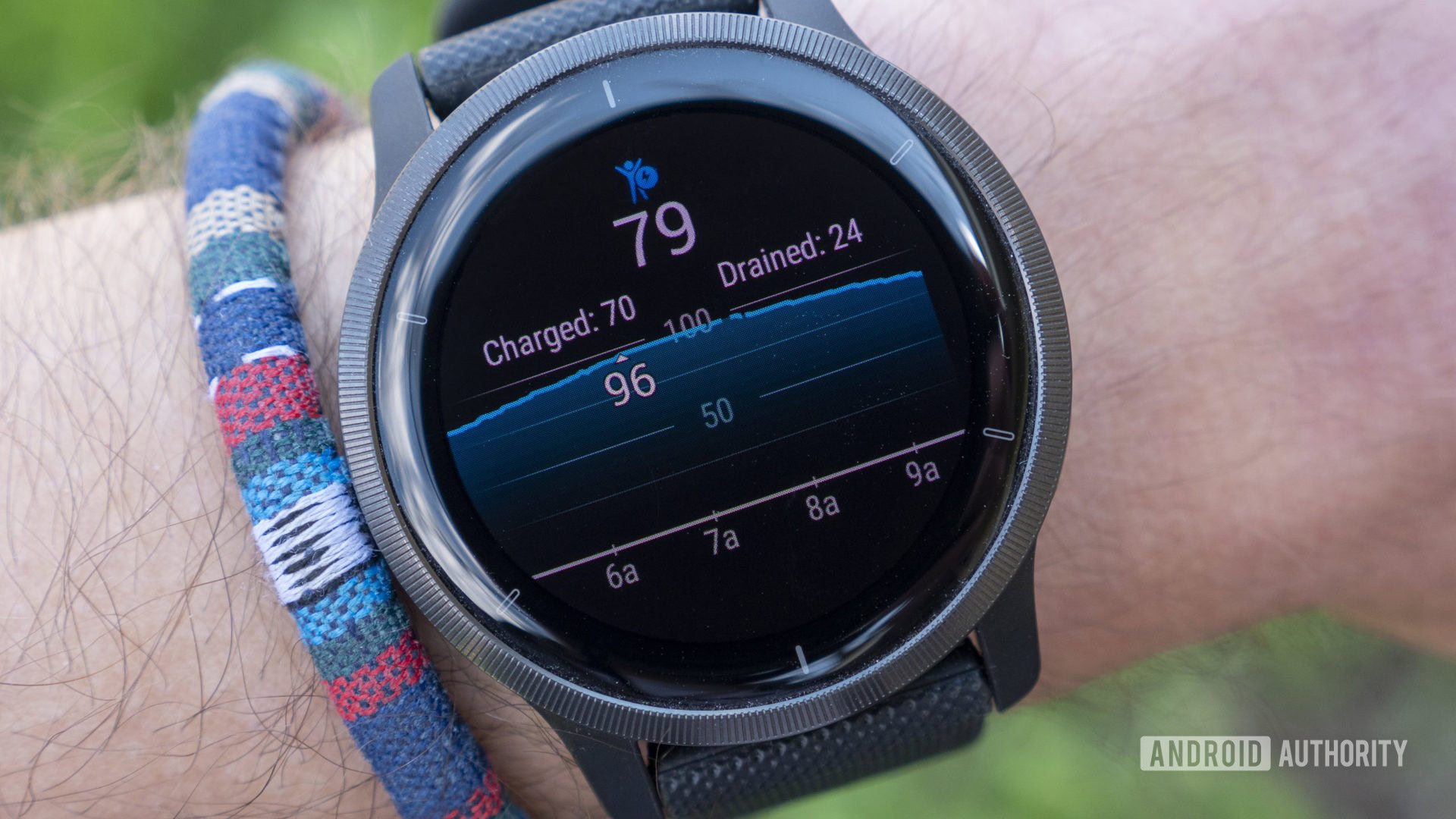
Garmin is utilizing the touchscreen in a better way. On the original Venu, tapping on a data page like heart rate or sleep would pull up a basic seven-day graph of your stats. It wasn’t all that easy to read on the watch. On the Venu 2, there’s now a more detailed graph that scrolls from left to right, allowing you to see your daily stats much more clearly than before. It’s a small change, but an important one for those of us who like to check on our heart rate or stress graphs throughout the day.
The Venu 2's software is a huge improvement over the last generation.
The Venu 2 can show your incoming smartphone notifications for both Android and iOS users. You can reply to texts via canned responses on Android, but that functionality isn’t available for iOS devices. Garmin Pay is also available on all Venu 2 models.
There are a fair amount of third-party apps and watch faces available for the Venu 2. The list is a little small right now, though there are some. Luckily, Garmin has a thriving developer community, so I expect the number of third-party options to skyrocket once more people get their wrists on the watch.
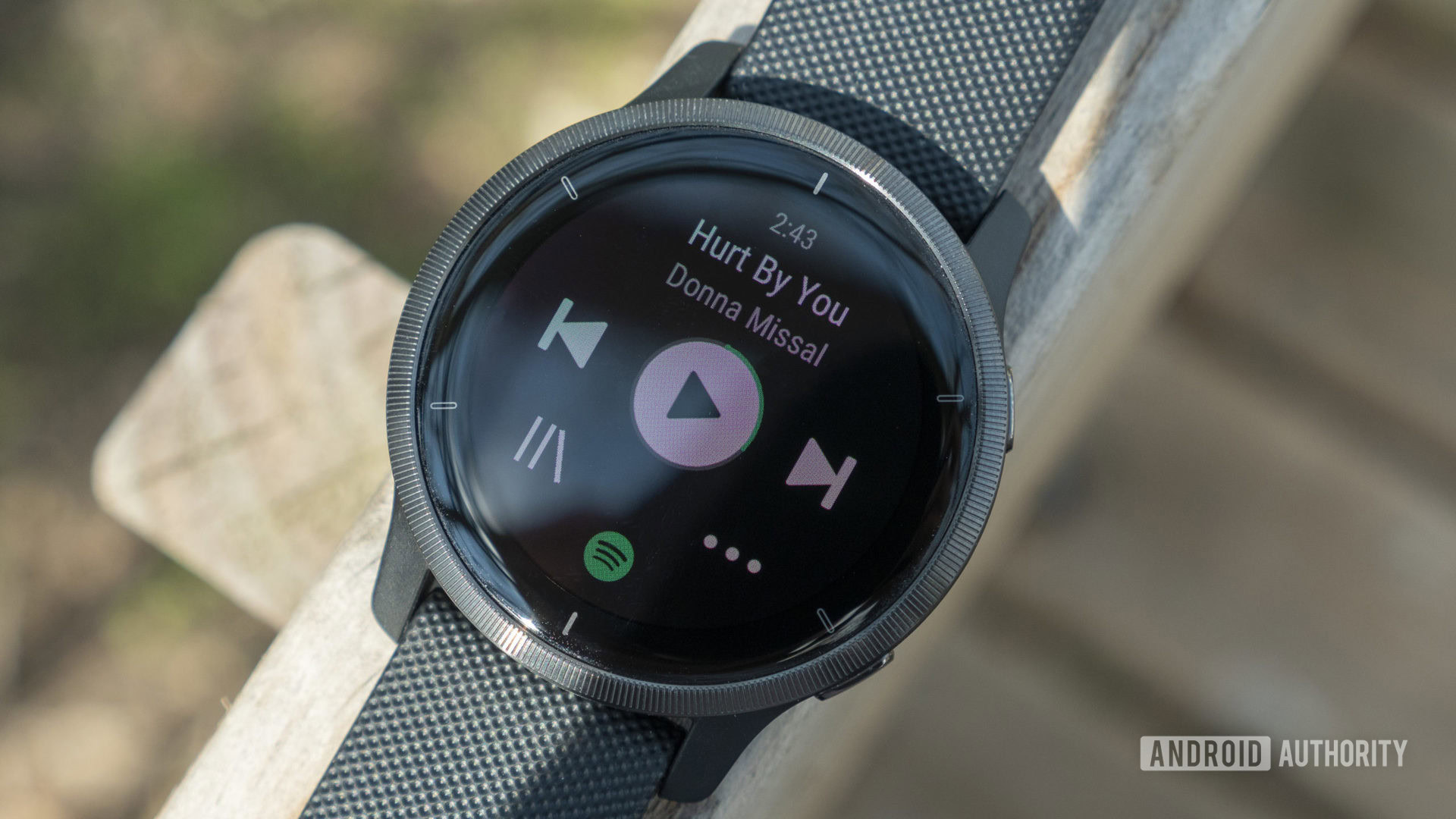
Garmin continues to be one of the leaders in on-device music options. It supports offline Spotify, Amazon Music, Deezer, iHeartRadio, and local music files if you don’t mind manually transferring them to your watch. Music storage on the Venu 2 has been increased from 500 songs to 650 songs.
Headphone connectivity has been pretty spotty for me, although this is another issue Garmin says will be fixed. I’m sure I don’t need to tell Garmin users that my Jaybird Vistas have been acting up lately, but I’ve had trouble keeping them connected throughout the entirety of my workouts. I’ve paired a few other earbuds to the watch, and connectivity appears to be fine.
Garmin Venu 2 specs
| Garmin Venu 2 and Venu 2S | |
|---|---|
Display | Venu 2: 1.3-inch AMOLED 416 x 416 resolution Venu 2S: 1.1-inch AMOLED 360 x 360 resolution Corning Gorilla Glass 3 |
Dimensions and weight | Venu 2: 45.4 x 45.4 x 12.2mm 22mm band 49g Venu 2S: 40.4 x 40.4 x 12.1mm 18mm band 38.2g |
Build materials | Stainless steel bezel and hardware Silicone band |
Battery | Venu 2: Rapid charging Up to 11 days in smartwatch mode Up to 8 hours in GPS mode + music Venu 2S: Rapid charging Up to 10 days in smartwatch mode Up to 7 hours in GPS mode + music |
IP rating | 5ATM |
Sensors | Garmin Elevate heart rate sensor GPS GLONASS Galileo Barometric altimeter Compass Gyroscope Accelerometer Thermometer Ambient light sensor Pulse ox blood oxygen saturation monitor |
Connectivity | Bluetooth ANT+ Wi-Fi |
Storage | Music: Up to 650 songs Activity data: 200 hours |
Compatibility | Android, iOS |
Garmin Pay | Yes |
Smartwatch features | Connect IQ-compatible Smartphone notifications Text response/reject phone call with text (Android only) Controls smartphone music Plays and controls smartwatch music Find my phone/find my watch Incident Detection LiveTrack |
Colors | Venu 2: Silver bezel with Granite Blue case, Slate bezel with Black case Venu 2S: Slate bezel with Graphite case, Light Gold bezel with Light Sand case, Silver bezel with Mist Grey case, Rose Gold bezel with White case |
Value and competition
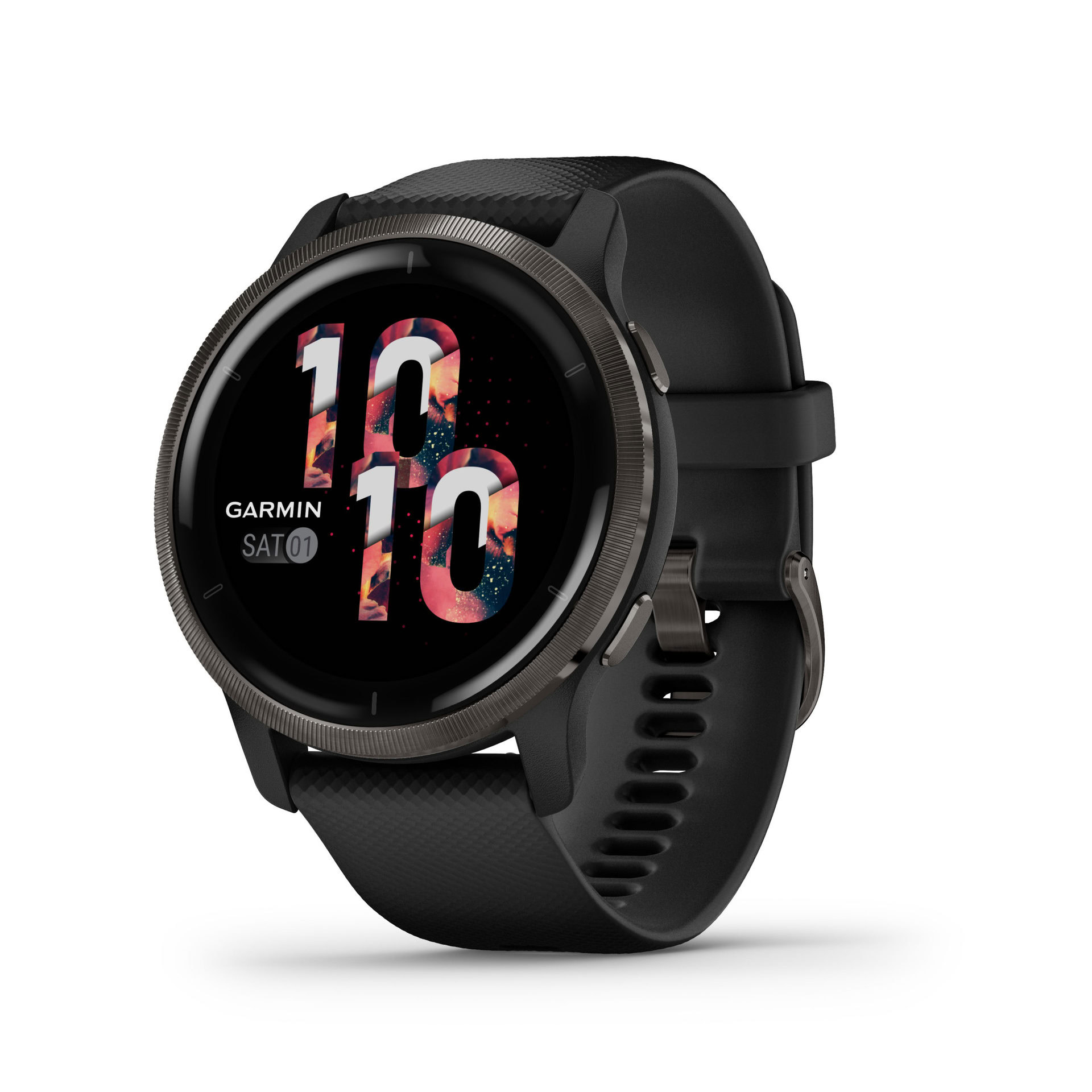
As mentioned, the Venu 2 costs $400, just as the Venu did at launch. I don’t think this is a very competitive price for the watch, but in Garmin’s defense, this is one of the most comprehensive wearables the company has ever sold. However, Garmin devices frequently go on sale during major retail holidays. If the $400 price tag is too much for you, consider waiting until Black Friday/Cyber Monday for the watch to drop in price.
The Apple Watch Series 6 (and mildly upgraded Series 7) is an obvious competitor to the Garmin Venu 2. Both devices are the same price, but the Apple Watch notably only works with iPhones. While the Apple Watch has the Venu 2 beat in smartwatch features, the Venu 2 tracks more health and fitness stats and might be the better pick for those who value performance data.
If you’re on Android, the Fitbit Sense and Versa 3 are also good, affordable Venu 2 competitors. They both come with onboard voice assistants and track many of the same metrics, although you can dig deeper into your data on the Venu 2. The Sense and Versa 3 can be purchased for $299 and $230, respectively.
If you’re more into Samsung’s ecosystem, the Galaxy Watch 3 should also be on your shortlist of Venu 2 alternatives. It’s not the best for sports tracking, but it will more than suffice for the basics. It’s also a fairly good smartwatch. The Galaxy Watch 3 is available for $399.
You might consider a Wear OS 3 smartwatch for the platform’s Google integration and app library. The Samsung Galaxy Watch 4 is the sensible (and only) choice here. The smaller model starts at $279, too, beating Samsung’s older watches and the Venu 2. However, we did run into a few GPS and battery endurance issues for those requiring a more serious training companion.
I’d also be remiss if I didn’t bring up older Garmin devices. You can get a lot of these features on the original Garmin Venu or Vivoactive 4. Don’t be too surprised if some Venu 2 features make it onto older devices, either. Then there’s the newer Garmin Venu 2 Plus, which retains its namesake’s design and core features but adds voice assistant and on-wrist phone call support for a $50 premium.
Garmin Venu 2 review: The verdict
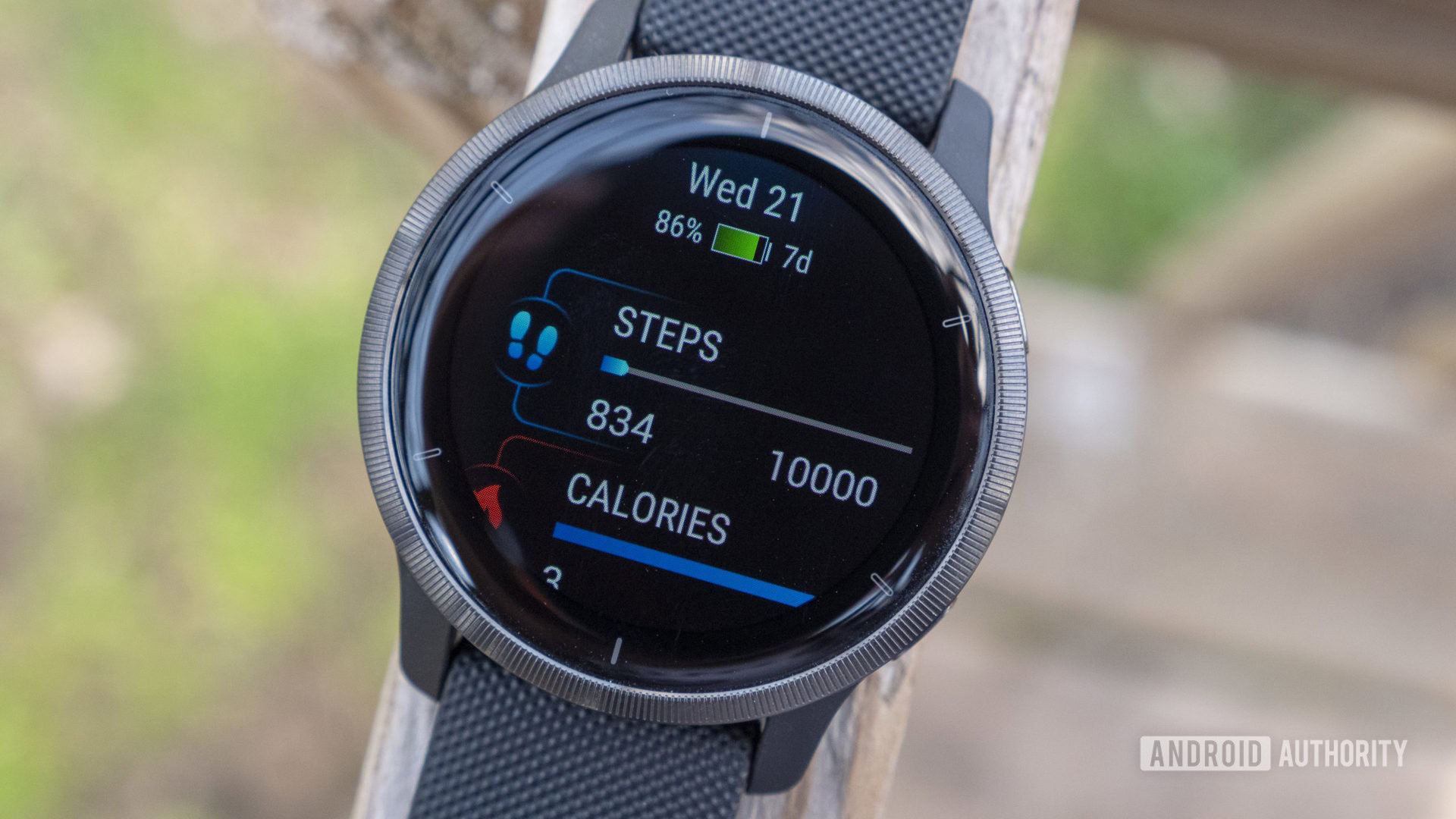
The Garmin Venu 2 is no doubt a worthy successor to the original Venu. It improves nearly every complaint we had, save for the high price tag. But you know what? I think a lot of people will gravitate towards this watch.
At the top of this review, I said this is Garmin’s most approachable smartwatch. The AMOLED display is a familiar feature in modern smartwatches, and Garmin has finally updated its software to really shine on that screen. Throw in unique features like Health Snapshot and Body Battery, and you have yourself a well-rounded wearable.
The Garmin Venu 2 is a well-rounded smartwatch that I don't want to take off my wrist.
Of course, some things need improving. The heart rate sensor isn’t quite there yet, and I’d really like to see Garmin focus on even more smartwatch features in the future. But arguably, that watch now exists with the more expensive Venu 2 Plus. Whether the premium is worth it is another matter entirely.